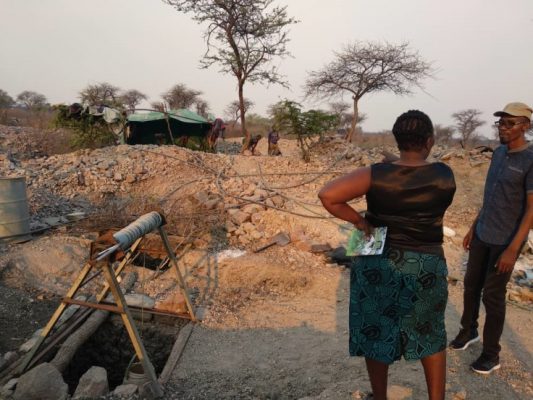Access to finance key for small-scale miners

Stakeholders in the small-scale mining sector see access to finance and technology as key in taking advantage of growth opportunities at a time Zimbabwe is angling for a US$12 billion in the sector by 2023.
This is in addition to the vast mineral resources Zimbabwe possess that if exploited, can boost the country’s foreign currency earnings.
A survey by the Zimbabwe Coalition on Debt and Development (ZIMCODD) titled “The Economy We Want” highlights that opportunities for economic and social transformation from a citizen’s perspective vary with each sector.
Small-scale miners bemoan lack of access to loans, which if made available for procurement of machinery and expansion projects, could be a game-changer for the sector that contributes over half of the gold delivered to Fidelity Printers.
The survey notes that: “6.81 per cent of the respondents from the mining sector saw an opportunity for growth through leveraging of the abundant minerals to stimulate socio-economic growth as a result of Government support to small-scale miners with loan facilities and access to technology.”
Interestingly, as part of the $18 billion economic recovery and stimulus package in the wake of Covid-19, the Government has allocated $1 billion to the mining sector through a credit facility for the gold sector targeting both small and large-scale miners.
Small-scale miners said the facility would bring a huge relief to their operations as they have been hard hit by the outbreak of the Covid-19 pandemic.
Zimbabwe Miners Federation (ZMF) secretary-general, Mr Philemon Mokuele, however, told The Chronicle that there was a need for the Government to ensure the fund was properly administered and benefited the right people.
Access to finance has always been a stumbling block for small to medium enterprises (SMEs) across all the economic sectors despite their enormous contribution to the economy.
In agriculture, small-scale producers have a critical role in the production of both food and non-food crops.
According to the ZIMCODD survey, 8.6 per cent that represented the farming community believe growth opportunities lie in equal allocation and distribution of inputs with emphasis on Government-led programmes such as the Command Agriculture.
“Agricultural inputs must be distributed and allocated proportionally according to the land one productively uses in a non-partisan manner. Additionally, market linkages were another opportunity noted by farmers since most small-scale farmers bemoaned the fact that they struggle to access markets to sell their produce at a fair and competitive price,” reads part of the survey.
Access to fair markets was also cited as critical to ensure farmers sell their produce at an open market which results in competitive prices and therefore improved quality of produce brought to the market by farmers in an effort to fetch higher prices.
Women and youth who represented 14.53 percent and 22.7 percent of the respondents respectively also saw an opportunity of leveraging on their numbers through effective participation and advocacy to influence economic policy formulation and implementation. The role of the media cannot be overlooked in all these processes to disseminate information and shape policy formulation.
Said ZIMCODD: “The media plays a critical role of ensuring that information reaches people as such involving them at all levels across all sectors warrants that they have access to first-hand information which means citizens access credible information from reliable sources at all times.”


